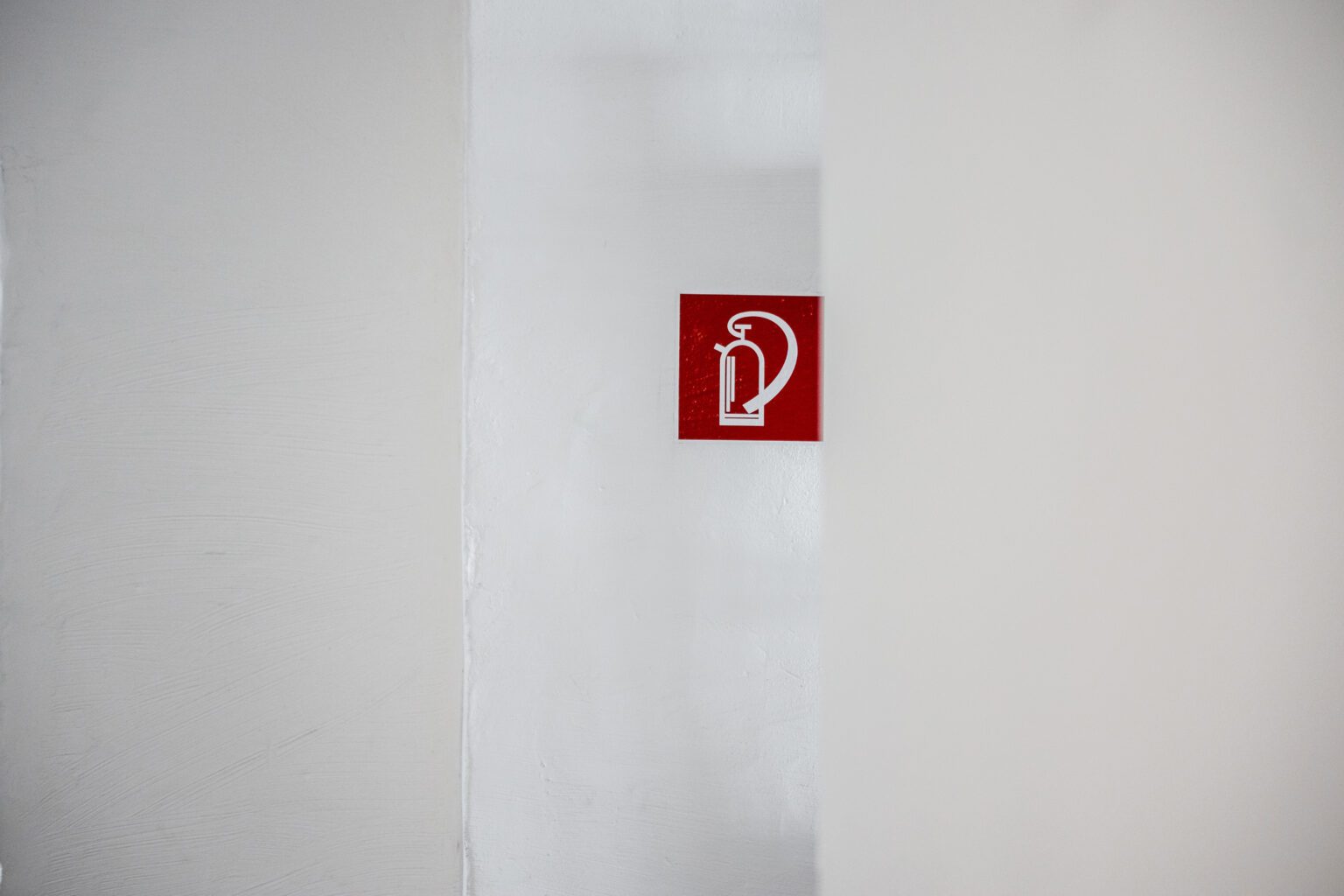DIN EN ISO 7010 is an international standard for safety signage, which also includes fire safety signs. ASR A1.3 and ISO 7010, last updated in 2021, are both relevant for the use of safety signs. Since its last update, DIN 4844-2 no longer contains any regulations on safety labelling.
Fire safety signs are visual communication tools that are easy to understand and require minimal or even no words. They are used to reduce hazards in companies for employees and visitors and to provide instructions in the event of a fire.
Technical rules and standards for fire safety signs
ASR A1.3 regulates the use of and additions to fire safety signs, while DIN EN ISO 7010 determines their content. Additional requirements apply to fluorescent signs. ASR A2.2 "Measures against fires" describes the necessary warning of fire hazards in section 7 "Fire detection and alarm" and lists additional alarm devices such as fire alarm systems, building alarm systems, electro-acoustic emergency warning systems, optical alarm devices, telephone systems and megaphones.
Meaning of fire safety signs
Fire safety signs belong to the "F" category of safety signs and, like all other safety signs, are characterised by a code letter and a three-digit number (e.g. F004: Fire-fighting equipment and devices). They are square, red with white symbols and signalise fire and fire hazards as well as extinguishing and assistance measures. They are supplemented by escape plans and escape signs to form a holistic fire protection concept.
To fulfil operational fire protection requirements, the Escape Plan Manager software can be used to quickly and easily create legally compliant escape and rescue plans.
Colours of fire safety signs
ISO 3864 stipulates that fire safety signs must have a specific colour scheme. This consists of a white symbol on a red background (RAL 9003 signal white and RAL 3001 signal red). To avoid confusion in hazardous situations, all safety signs are clearly differentiated from one another, e.g. escape signs (square, green and white), prohibition signs (round, black pictogram on a white background with a red border and red horizontal bar), warning signs (triangular, yellow and black) and mandatory signs (round, blue and white).
Fluorescence of fire safety signs
ASR A1.3 requires that fire safety signs must remain recognisable even without ceiling lighting. This is possible through self-sufficient illumination of the individual fire safety signs or through photoluminescent (fluorescent) signs. In this case, fluorescence must be guaranteed by sufficient lighting.
Fluorescent fire safety signs lose their colour when afterglowing, but the shape and pictogram remain unchanged.
Types of fire safety signs according to ISO 7010
Fire safety signs may also include arrows, which are usually green and indicate the position or direction of emergency exits and exits, fire extinguishers, fire alarms, etc.
Which fire safety signs are currently valid?
Old safety signs (DIN 4844-2) are still valid and it is possible to extend the signage in accordance with the older standard. However, if older safety signs are used, employers must prove that the signage was sufficient and the content clearly recognisable in the event of an accident. According to the Federal Ministry of Labour and Social Affairs (GMBl 2017), companies should carry out a comprehensive risk assessment to ensure that the fire safety signs meet the current requirements of the Workplace Ordinance.
The mixing of DIN 4844-2 and ISO 7010 symbols must be avoided at all costs.
Is there a transition phase from the old to the new safety labelling?
No date has yet been set from which safety signage prior to 2013 is no longer valid. Nevertheless, it is recommended to upgrade to DIN EN ISO 7010 in order to avoid potential liability cases.
To summarise, it is important that companies have fire safety signs that comply with current standards and are easy to understand. ISO 7010 and other technical regulations ensure that signage is clearly recognisable in the event of a fire and provides important information about safety measures. By complying with the relevant regulations, companies can ensure the safety of their employees and minimise liability risks in the event of an emergency.
